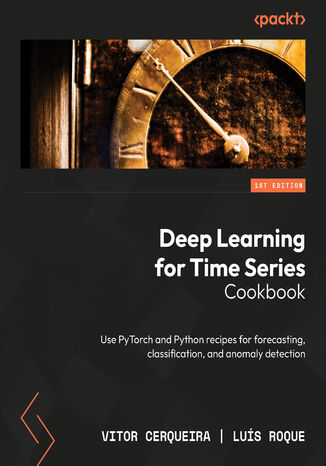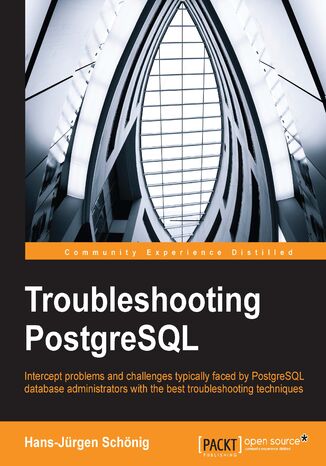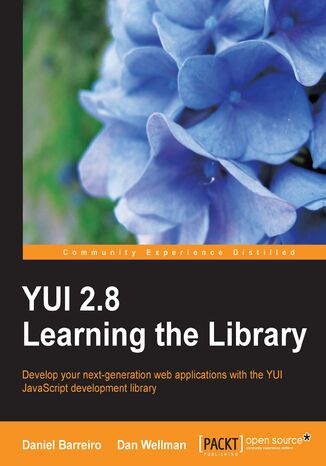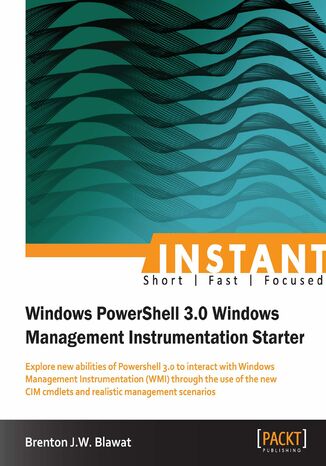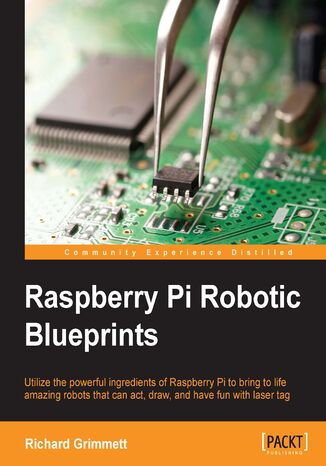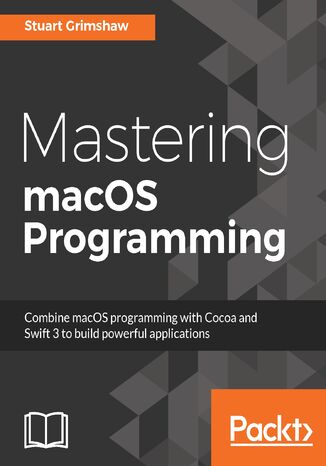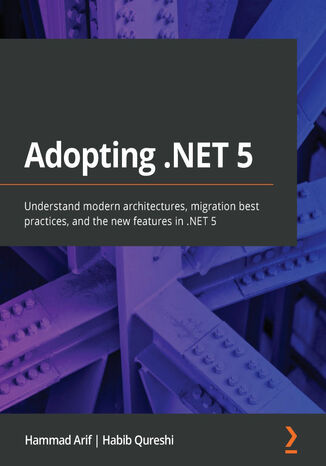Categories
-
- Bitcoin
- Businesswoman
- Coaching
- Controlling
- E-business
- Economy
- Finances
- Stocks and investments
- Personal competence
- Computer in the office
- Communication and negotiation
- Small company
- Marketing
- Motivation
- Multimedia trainings
- Real estate
- Persuasion and NLP
- Taxes
- Social policy
- Guides
- Presentations
- Leadership
- Public Relation
- Reports, analyses
- Secret
- Social Media
- Sales
- Start-up
- Your career
- Management
- Project management
- Human Resources
-
- Architektura i wnętrza
- Health and Safety
- Biznes i Ekonomia
- Home and garden
- E-business
- Ekonomia i finanse
- Esoterecism
- Finances
- Personal finance
- Business
- Photography
- Computer science
- HR & Payroll
- For women
- Computers, Excel
- Accounts
- Culture and literature
- Scientific and academic
- Environmental protection
- Opinion-forming
- Education
- Taxes
- Travelling
- Psychology
- Religion
- Agriculture
- Book and press market
- Transport and Spedition
- Healthand beauty
-
- Office applications
- Data bases
- Bioinformatics
- IT business
- CAD/CAM
- Digital Lifestyle
- DTP
- Electronics
- Digital photography
- Computer graphics
- Games
- Hacking
- Hardware
- IT w ekonomii
- Scientific software package
- School textbooks
- Computer basics
- Programming
- Mobile programming
- Internet servers
- Computer networks
- Start-up
- Operational systems
- Artificial intelligence
- Technology for children
- Webmastering
-
- Antology
- Ballade
- Biographies and autobiographies
- For adults
- Dramas
- Diaries, memoirs, letters
- Epic, epopee
- Essay
- Fantasy and science fiction
- Feuilletons
- Work of fiction
- Humour and satire
- Other
- Classical
- Crime fiction
- Non-fiction
- Fiction
- Mity i legendy
- Nobelists
- Novellas
- Moral
- Okultyzm i magia
- Short stories
- Memoirs
- Travelling
- Narrative poetry
- Poetry
- Politics
- Popular science
- Novel
- Historical novel
- Prose
- Adventure
- Journalism, publicism
- Reportage novels
- Romans i literatura obyczajowa
- Sensational
- Thriller, Horror
- Interviews and memoirs
-
- Archeology
- Bibliotekoznawstwo
- Cinema studies
- Philology
- Polish philology
- Philosophy
- Finanse i bankowość
- Geography
- Economy
- Trade. World economy
- History and archeology
- History of art and architecture
- Cultural studies
- Linguistics
- Literary studies
- Logistics
- Maths
- Medicine
- Humanities
- Pedagogy
- Educational aids
- Popular science
- Other
- Psychology
- Sociology
- Theatre studies
- Theology
- Economic theories and teachings
- Transport i spedycja
- Physical education
- Zarządzanie i marketing
-
- Health and Safety
- History
- Road Code. Driving license
- Law studies
- Healthcare
- General. Compendium of knowledge
- Academic textbooks
- Other
- Construction and local law
- Civil law
- Financial law
- Economic law
- Economic and trade law
- Criminal law
- Criminal law. Criminal offenses. Criminology
- International law
- International law
- Health care law
- Educational law
- Tax law
- Labor and social security law
- Public, constitutional and administrative law
- Family and Guardianship Code
- agricultural law
- Social law, labour law
- European Union law
- Industry
- Agricultural and environmental
- Dictionaries and encyclopedia
- Public procurement
- Management
-
- Africa
- Albums
- Southern America
- North and Central America
- Australia, New Zealand, Oceania
- Austria
- Asia
- Balkans
- Middle East
- Bulgary
- China
- Croatia
- The Czech Republic
- Denmark
- Egipt
- Estonia
- Europe
- France
- Mountains
- Greece
- Spain
- Holand
- Iceland
- Lithuania
- Latvia
- Mapy, Plany miast, Atlasy
- Mini travel guides
- Germany
- Norway
- Active travelling
- Poland
- Portugal
- Other
- Przewodniki po hotelach i restauracjach
- Russia
- Romania
- Slovakia
- Slovenia
- Switzerland
- Sweden
- World
- Turkey
- Ukraine
- Hungary
- Great Britain
- Italy
-
- Philosophy of life
- Kompetencje psychospołeczne
- Interpersonal communication
- Mindfulness
- General
- Persuasion and NLP
- Academic psychology
- Psychology of soul and mind
- Work psychology
- Relacje i związki
- Parenting and children psychology
- Problem solving
- Intellectual growth
- Secret
- Sexapeal
- Seduction
- Appearance and image
- Philosophy of life
-
- Bitcoin
- Businesswoman
- Coaching
- Controlling
- E-business
- Economy
- Finances
- Stocks and investments
- Personal competence
- Communication and negotiation
- Small company
- Marketing
- Motivation
- Real estate
- Persuasion and NLP
- Taxes
- Social policy
- Guides
- Presentations
- Leadership
- Public Relation
- Secret
- Social Media
- Sales
- Start-up
- Your career
- Management
- Project management
- Human Resources
-
- Antology
- Ballade
- Biographies and autobiographies
- For adults
- Dramas
- Diaries, memoirs, letters
- Epic, epopee
- Essay
- Fantasy and science fiction
- Feuilletons
- Work of fiction
- Humour and satire
- Other
- Classical
- Crime fiction
- Non-fiction
- Fiction
- Mity i legendy
- Nobelists
- Novellas
- Moral
- Okultyzm i magia
- Short stories
- Memoirs
- Travelling
- Poetry
- Politics
- Popular science
- Novel
- Historical novel
- Prose
- Adventure
- Journalism, publicism
- Reportage novels
- Romans i literatura obyczajowa
- Sensational
- Thriller, Horror
- Interviews and memoirs
-
- Philosophy of life
- Interpersonal communication
- Mindfulness
- General
- Persuasion and NLP
- Academic psychology
- Psychology of soul and mind
- Work psychology
- Relacje i związki
- Parenting and children psychology
- Problem solving
- Intellectual growth
- Secret
- Sexapeal
- Seduction
- Appearance and image
- Philosophy of life
Most organizations exhibit a time-dependent structure in their processes, including fields such as finance. By leveraging time series analysis and forecasting, these organizations can make informed decisions and optimize their performance. Accurate forecasts help reduce uncertainty and enable better planning of operations. Unlike traditional approaches to forecasting, deep learning can process large amounts of data and help derive complex patterns. Despite its increasing relevance, getting the most out of deep learning requires significant technical expertise.This book guides you through applying deep learning to time series data with the help of easy-to-follow code recipes. You’ll cover time series problems, such as forecasting, anomaly detection, and classification. This deep learning book will also show you how to solve these problems using different deep neural network architectures, including convolutional neural networks (CNNs) or transformers. As you progress, you’ll use PyTorch, a popular deep learning framework based on Python to build production-ready prediction solutions.By the end of this book, you'll have learned how to solve different time series tasks with deep learning using the PyTorch ecosystem.
Dan Wellman, Daniel Barreiro, Daniel Osvaldo Barreiro
The YUI Library is a set of utilities and controls written in JavaScript for building Rich Internet Applications, across all major browsers and independently of any server technology. There's a lot of functionality baked into YUI, but getting to and understanding that functionality is not for the faint of heart. This book gives you a clear picture of YUI through a step-by-step approach, packed with lots of examples.YUI 2.8: Learning the Library covers all released (non-beta) components of the YUI 2.8 Library in detail with plenty of working examples, looking at the classes that make up each component and the properties and methods that can be used. It includes a series of practical examples to reinforce how each component should/can be used, showing its use to create complex, fully featured, cross-browser, Web 2.0 user interfaces. It has been updated from its first edition with the addition of several chapters covering several new controls and enriched with lots of experience of using them.You will learn to create a number of powerful JavaScript controls that can be used straightaway in your own applications. Besides giving you a deep understanding of the YUI library, this book will expand your knowledge of object-oriented JavaScript programming, as well as strengthen your understanding of the DOM and CSS. The final chapter describes many of the tools available to assist you the developer in debugging, maintaining, and ensuring the best quality in your code. In this new edition, all the examples have been updated to use the most recent coding practices and style and new ones added to cover newer components. Since the basic documentation for the library is available online, the focus is on providing insight and experience.The authors take the reader from beginner to advanced-level YUI usage and understanding.
PowerShell and Windows Management Instrumentation (WMI) provide you with the ability to remotely manage systems. Whether it is viewing available disk space, or starting an executable remotely, PowerShell 3.0 WMI provides limitless options for scripting the management of systems.Instant Windows Powershell 3.0 Windows Management Instrumentation Starter follows industry standard scripting techniques, utilizing new powerful Cmdlets, to manage different aspects of an operating system and provides practical examples for managing your systems.You will learn how to create, verify, and terminate new Cmdlets that were introduced with PowerShell 3.0 and apply this new knowledge to real world management scenarios. It will provide detailed information about the structure of WMI, and the best ways to get, set, and execute items on a system, both locally and remotely. You will also learn how to create, verify, and terminate new CIM sessions using the available Cmdlets. You will also learn how to search CIM classes for available properties and methods, create a new instance of a class, get an existing instance of an existing class, get an associated instance of a class, and remove an instance of a class. Finally, you will learn how to remotely execute code on a system using WMI.Instant Windows Powershell 3.0 Windows Management Instrumentation Starter will provide you with the ability to fully utilize Windows Management Instrumentation through the use of a variety of new Cmdlets introduced with PowerShell 3.0.
Hamida Rebai Trabelsi, Lori Lalonde
To deliver software at a faster rate and reduced costs, companies with stable legacy systems and growing data volumes are trying to modernize their applications and accelerate innovation, but this is no easy matter. A Developer’s Guide to Building Resilient Cloud Applications with Azure helps you overcome these application modernization challenges to build secure and reliable cloud-based applications on Azure and connect them to databases with the help of easy-to-follow examples.The book begins with a basic definition of serverless and event-driven architecture and Database-as-a-Service, before moving on to an exploration of the different services in Azure, namely Azure APIManagement using the gateway pattern, event-driven architecture, Event Grid, Azure Event Hubs, Azure message queues, FaaS using Azure Functions, and the database-oriented cloud. Throughout the chapters, you’ll learn about creating, importing, and managing APIs and Service Fabric in Azure, and discover how to ensure continuous integration and deployment in Azure to fully automate the software delivery process, that is, the build and release process.By the end of this book, you’ll be able to build and deploy cloud-oriented applications using APIs, serverless, Service Fabric, Azure Functions, and Event Grid technologies.
Wolfram Donat, Richard Grimmett
The Raspberry Pi is a series of credit card-sized single-board computers developed in the UK by the Raspberry Pi Foundation with the intention of promoting the teaching of basic computer science in schools. The Raspberry Pi is known as a tiny computer built on a single circuit board. It runs a Linux operating system, and has connection ports for various peripherals so that it can be hooked up to sensors, motors, cameras, and more. Raspberry Pi has been hugely popular among hardware hobbyists for various projects, including robotics. This book gives you an insight into implementing several creative projects using the peripherals provided by Raspberry Pi. To start, we’ll walk through the basic robotics concepts that the world of Raspberry Pi offers us, implementing wireless communication to control your robot from a distance. Next, we demonstrate how to build a sensible and a visionary robot, maximizing the use of sensors and step controllers. After that, we focus on building a wheeled robot that can draw and play hockey. To finish with a bang, we’ll build an autonomous hexcopter, that is, a flying robot controlled by Raspberry Pi.By the end of this book, you will be a maestro in applying an array of different technologies to create almost any imaginable robot.
Mastering macOS Programming. Hands-on guide to macOS Sierra Application Development
Stuart Grimshaw, Gregory Casamento
macOS continues to lead the way in desktop operating systems, with its tight integration across the Apple ecosystem of platforms and devices. With this book, you will get an in-depth knowledge of working on macOS, enabling you to unleash the full potential of the latest version using Swift 3 to build applications.This book will help you broaden your horizons by taking your programming skills to next level. The initial chapters will show you all about the environment that surrounds a developer at the start of a project. It introduces you to the new features that Swift 3 and Xcode 8 offers and also covers the common design patterns that you need to know for planning anything more than trivial projects. You will then learn the advanced Swift programming concepts, including memory management, generics, protocol orientated and functional programming and with this knowledge you will be able to tackle the next several chapters that deal with Apple’s own Cocoa frameworks. It also covers AppKit, Foundation, and Core Data in detail which is a part of the Cocoa umbrella framework. The rest of the book will cover the challenges posed by asynchronous programming, error handling, debugging, and many other areas that are an indispensable part of producing software in a professional environment.By the end of this book, you will be well acquainted with Swift, Cocoa, and AppKit, as well as a plethora of other essential tools, and you will be ready to tackle much more complex and advanced software projects.
.NET 5 is the unification of all .NET technologies in a single framework that can run on all platforms and provide a consistent experience to developers, regardless of the device, operating system (OS), or cloud platform they choose.By updating to .NET 5, you can build software that can quickly adapt to the rapidly changing demands of modern consumers and stay up to date on the latest technology trends in .NET.This book provides a comprehensive overview of all the technologies that will form the future landscape of .NET using practical examples based on real-world scenarios, along with best practices to help you migrate from legacy platforms.You’ll start by learning about Microsoft’s vision and rationale for the unification of the platforms. Then, you’ll cover all the new language enhancements in C# 9. As you advance, you’ll find out how you can align yourself with modern technology trends, focusing on everything from microservices to orchestrated containerized deployments. Finally, you’ll learn how to effectively integrate machine learning in .NET code.By the end of this .NET book, you’ll have gained a thorough understanding of the .NET 5 platform, together with a readiness to adapt to future .NET release cycles, and you’ll be able to make architectural decisions about porting legacy systems and code bases to a newer platform.

